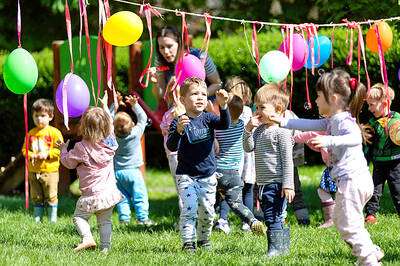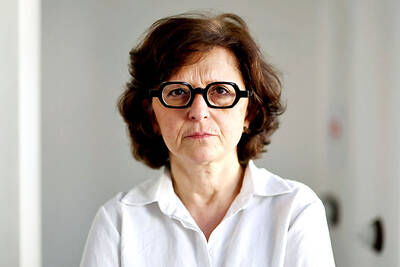From its vault in Sydney's Australian Museum, a pickled Tasmanian tiger pup has brought the prospect of reviving an extinct species to the verge of reality, bringing mixed reactions of wonder and terror.
More than 60 years after its extinction, the museum launched a project to clone the Tasmanian tiger, more correctly known as the thylacine, a lost icon of Australia's island state. This pup's DNA was the starting point, due to its remarkable state of preservation.
Three years later, geneticists believe the thylacine could conceivably be cloned within a decade.
For proponents, it is a chance to undo a terrible mistake that humans made. Human hunting was responsible for wiping out the thylacine in Tasmania, its final refuge. For diehard critics, it is "playing God."
The driving force behind the project is museum director Michael Archer, who dismisses the frequent comparisons with Jurassic Park, the Steven Spielberg film in which scientists recreate dinosaurs by cloning their DNA.
"The thylacine's world is not gone. The ecological system of which it was the top carnivore is still the same. I think we have a moral obligation to bring it back if we can do it," Archer told AFP. "I think this as a terrible thing humans did, and most religious people agree.
"I am not in any doubt that it will happen eventually. It is the geneticists who have been saying this could be done in 10 years."
The thylacine was hailed as a wonder of nature when Europeans first saw it. Although a marsupial which nurtured its young in a pouch, its appearance and behavior were strikingly similar to that of a dog.
It is considered a perfect case of "convergent evolution," where similar environments and lifestyles produce similar features in totally unrelated species.
But the introduction of the dingo had already eliminated it from mainland Australia. European farmers soon dubbed it a pest. None has been produced alive since 1936.
Archer says he suggested the animal might eventually be cloned 15 years ago, but generally got a dismissive response. Advances in genetic engineering and the arrival of Dolly the cloned sheep changed that. Then the museum's attention turned to the pup, which had been in its possession since 1866.
Remarkably little is known about it, not even where it was captured. Researchers have deduced that it had been in its mother's pouch for about four months and was nearly full term. It is assumed the mother must have been killed.
It was sent back from Tasmania by George Masters, then employed by the museum as a collector, who may have purchased it. By pure chance, whoever preserved it used alcohol, an unusual step which left most of its DNA intact more than a century later.
Work with its DNA provided the impetus to get the project going. However, genetic material has now been obtained from at least three individual thylacines, both male and female.
Thylacine remains from hundreds of animals are in collections around the world, so Archer says the possibility is wide open not just of cloning one animal but of eventually returning a viable population to the wild.
Archer even has images of Australians keeping thylacines as pets, as some people did in the 19th century.
Among the hurdles to be overcome is getting dead DNA to act again as living DNA. The DNA must be extracted and multiplied, using yeast or bacteria cells.
A suitable host animal will be needed, probably the thylacine's distant cousin, the Tasmanian devil. More needs to be known about that animal's breeding cycle and its DNA needs to be sequenced.
If the thylacine can be cloned, however, it has huge implications for conservation. Some critics fear people may cease to care about conservation at all.
Museum collections of bones and other once living artefacts will suddenly be more than mere historical curiosities. They will be time capsules which could be used to take species into the future.
Researchers say the project is massively underfunded. Only a single researcher has been working fulltime on the project, with limited laboratory facilities.
The roughly 120,000 Australian dollars (US$83,000) so far spent has been largely funded privately, partly by a trust with Tasmanian connections.
Archer and his colleagues are seeking more funding, promising in return one of the most exciting scientific projects of the present day.

BACKLASH: The National Party quit its decades-long partnership with the Liberal Party after their election loss to center-left Labor, which won a historic third term Australia’s National Party has split from its conservative coalition partner of more than 60 years, the Liberal Party, citing policy differences over renewable energy and after a resounding loss at a national election this month. “Its time to have a break,” Nationals leader David Littleproud told reporters yesterday. The split shows the pressure on Australia’s conservative parties after Prime Minister Anthony Albanese’s center-left Labor party won a historic second term in the May 3 election, powered by a voter backlash against US President Donald Trump’s policies. Under the long-standing partnership in state and federal politics, the Liberal and National coalition had shared power

A Croatian town has come up with a novel solution to solve the issue of working parents when there are no public childcare spaces available: pay grandparents to do it. Samobor, near the capital, Zagreb, has become the first in the country to run a “Grandmother-Grandfather Service,” which pays 360 euros (US$400) a month per child. The scheme allows grandparents to top up their pension, but the authorities also hope it will boost family ties and tackle social isolation as the population ages. “The benefits are multiple,” Samobor Mayor Petra Skrobot told reporters. “Pensions are rather low and for parents it is sometimes

CONTROVERSY: During the performance of Israel’s entrant Yuval Raphael’s song ‘New Day Will Rise,’ loud whistles were heard and two people tried to get on stage Austria’s JJ yesterday won the Eurovision Song Contest, with his operatic song Wasted Love triumphing at the world’s biggest live music television event. After votes from national juries around Europe and viewers from across the continent and beyond, JJ gave Austria its first victory since bearded drag performer Conchita Wurst’s 2014 triumph. After the nail-biting drama as the votes were revealed running into yesterday morning, Austria finished with 436 points, ahead of Israel — whose participation drew protests — on 357 and Estonia on 356. “Thank you to you, Europe, for making my dreams come true,” 24-year-old countertenor JJ, whose

A documentary whose main subject, 25-year-old photojournalist Fatima Hassouna, was killed in an Israeli airstrike in Gaza weeks before it premiered at Cannes stunned viewers into silence at the festival on Thursday. As the cinema lights came back on, filmmaker Sepideh Farsi held up an image of the young Palestinian woman killed with younger siblings on April 16, and encouraged the audience to stand up and clap to pay tribute. “To kill a child, to kill a photographer is unacceptable,” Farsi said. “There are still children to save. It must be done fast,” the exiled Iranian filmmaker added. With Israel